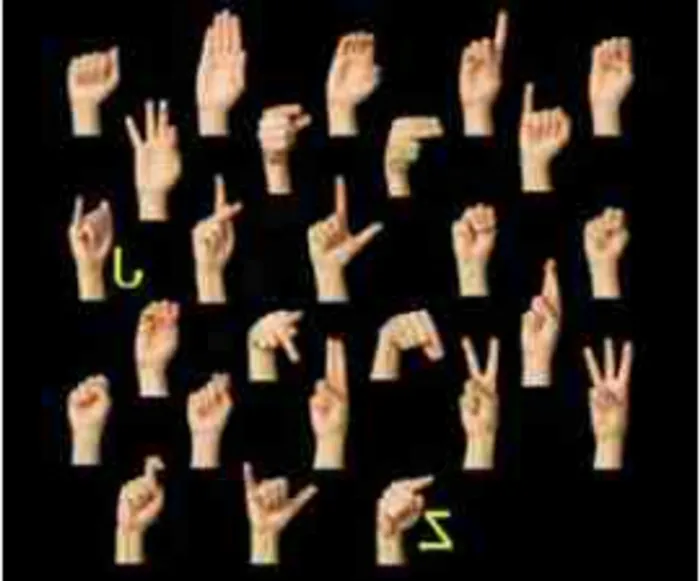Sign language: It’s official

SASL being declared an official language in the South African Schools Act of 1996 for the purposes of teaching and learning in public schools (note, not only Deaf schools)
Picture: Shelley Kjonstad/African News Agency (ANA)/taken January 10, 2023 – Thembi Ngcungama, Lindelihle Mkhize, Sibongile Shandu and Busi Nxumalo from the Blind and Deaf society who all work in the sewing room, show the sign for love. South Africa now becomes the first country in the world to recognise its national sign language as an official language in the country’s constitution, the writer says.
By Theodorus du Plessis
Firstly, South Africa now becomes the first country in the world to recognise its national sign language as an official language in the country’s constitution. This is different from the current 11 countries that officially recognise their sign languages.
Secondly, South Africa becomes only the seventh country in the world to recognise its national sign language as an official national language. The other countries where the national sign language is an official language are Uruguay (as of 2001), New Zealand (as of 2006), Poland (as of 2012), Papua New Guinea and South Korea (both as of 2015), and Malta (as of 2016).
Four of these countries – New Zealand, Poland, South Korea, and Malta – have affected the officialisation of their national sign languages through a national sign language law. Uruguay has done so through disability legislation and Papua New Guinea through a dictation of the country’s National Executive Council.
Thirdly, it took South African Sign Language (SASL) just as long to become an official language of the country, as was the case with South Africa’s nine Sintu languages (Zulu, Sotho, etc.). These languages were first recognised as official languages at regional level in 1963 but were recognised as national official languages alongside Afrikaans and English from the interim 1993 Constitution. SASL was granted official status from nowhere within 30 years. Incidentally, Afrikaans gained official status in 1925 – within 17 years after the 1909 Union Act was passed, recognising only English and Dutch as official languages.
Three factors played a role
Achieving these exceptional milestones is due to at least three factors, namely a favourable socio-political climate globally around minority languages and the whole disability issue, sustained pressure from an active Deaf lobby, and the active and decisive bottom-up actions by a string of role players.
The degree of political favour should certainly not be lost sight of either. Already in 1995, the ruling ANC wanted SASL to become an official language, and eventually submitted exactly such a proposal to the Constitutional Assembly.
Even though the time was not ripe for this, the proposal resulted in SASL being declared an official language in the South African Schools Act of 1996 for the purposes of teaching and learning in public schools (note, not only Deaf schools), the inclusion of “sign language” [sic] in the constitutional language mandate of the Pan South African Language Board, and the granting of linguistic human rights to all South Africans, including the Deaf, in terms of the Bill of Human Rights. The further amplification of SASL in terms of the 18th Constitutional Amendment crowns this campaign, which goes back to the period of the birth of our democracy.
International experts give three reasons why the officialisation of countries’ national sign languages is significant:
- It can help to ensure that Deaf people have access to education, employment, and other services in their ‘own language’.
- It can promote the use of sign languages in general and also help to preserve the languages.
- It can raise awareness about the so-called Deaf culture and the contributions of the Deaf.

All three reasons also bring us to the important issue of inclusivity. Education, in particular, plays an important role in this. To date, the Schools Act has been enforced in such a way that SASL has mainly been taught in Deaf schools as home language, while the law stipulates that it applies to all public schools.
Now that SASL is also a national official language, perhaps the opportunity has come for the inclusion of SASL as home language in all schools. More importantly, a curriculum must now be developed so that the language can also be taught as first and second additional language in all schools. Such a thing would give inclusivity an enormous jolt. Many universities have been offering SASL as a subject for some time and can attest to the exceptional contribution it makes to fellowship between hearing and deaf persons.
Will not promote inclusivity as such
Also of great importance is the establishment of a functional language dispensation that will include professional language services for the Deaf as well. This will assist in actively realising the significant provisions of the Use of Official Languages Act of 2012 that state entities must establish communication for persons with SASL as preferred language.
It is important to understand that the mere inclusion of SASL as a 12th official language will not promote inclusivity as such. It will require hard work. And more hard work!
Prof Theodorus du Plessis, Department of South African Sign Language and Deaf Studies, University of the Free State
Related Topics: